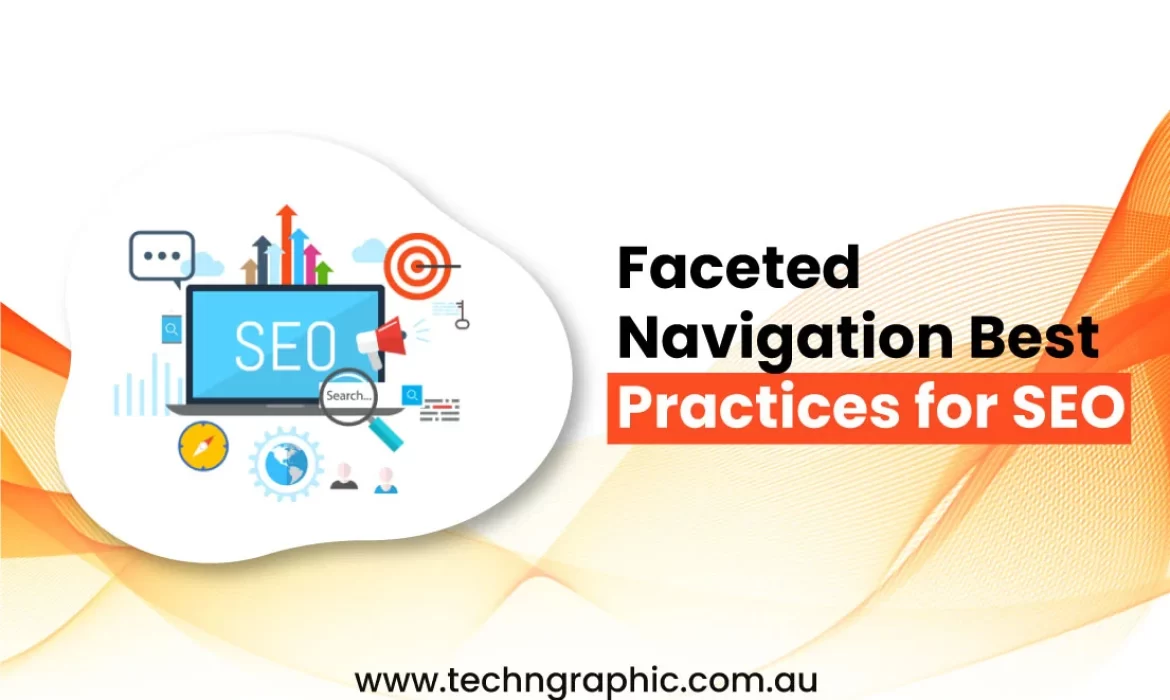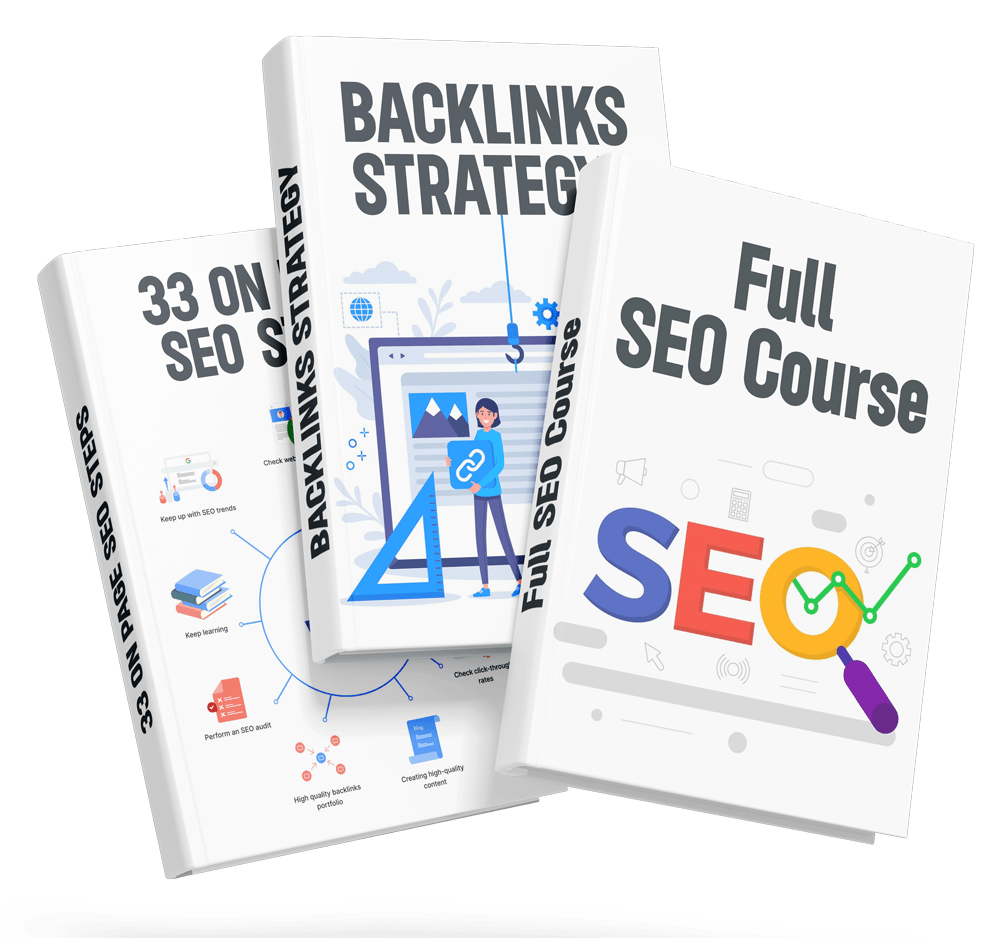Copy the code below by clicking the “Copy” button:
Large e-commerce websites face unique challenges when trying to ensure optimal site architecture, crawlability, and SEO performance. Faceted navigation, a system that allows users to filter results by attributes like size, color, or price, can help make these sites more user-friendly.
Download Your Faceted Navigation Best Practices Checklist
Ensure optimal SEO performance and user experience with our comprehensive checklist. Click the button below to download the PDF.
Download ChecklistHowever, if not implemented properly, faceted navigation can harm SEO, leading to problems like:
- Duplicate content
- Wasted crawl budget
- Diluted link equity
This guide will cover best practices for implementing faceted navigation to ensure SEO success and deliver an optimal user experience.
What Is Faceted Navigation?
Faceted navigation refers to the filtering options available on the sidebar of e-commerce websites. These filters allow users to narrow down search results based on specific attributes, such as color, size, or price range.
Example:
A user searching for a “purple cardigan, size medium, with black trim” would use faceted navigation to find the exact product.
Faceted navigation is not just a useful tool for user experience; it also plays a critical role in SEO. The way these filters are indexed, and the URLs generated, can either help or hurt a site’s SEO performance.
Table: Key SEO Components of Faceted Navigation
| Attribute | User Benefit | SEO Impact |
| Facets | Refines search results | Can create duplicate pages |
| Canonical URLs | Consolidates duplicate content | Preserves link equity |
| Noindex Tags | Excludes unnecessary pages | Optimizes crawl budget |
| Robots.txt | Blocks unwanted URLs from crawling | Saves crawl budget |
Common SEO Issues with Faceted Navigation
Poorly implemented faceted navigation can negatively impact SEO. Let’s examine the key problems.
1. Duplicate Content
Faceted navigation can create multiple URLs for similar content, resulting in duplicate content issues. Search engines may struggle to decide which version of a page to rank, potentially hurting rankings.
Example:
Multiple URLs may be generated for similar t-shirts, each differing slightly based on filter choices (color, size, brand).
| URL | Content |
| www.shop.com/grey-tshirt | Grey T-shirt |
| www.shop.com/grey-tshirt/?size=M | Grey T-shirt, Size Medium |
| www.shop.com/grey-tshirt/?size=M&brand=Adidas | Grey Adidas T-shirt, Size Medium |
2. Wasted Crawl Budget
Search engines have a limited “crawl budget” — the number of pages they can crawl on a site. Important pages may be overlooked if search bots waste time crawling unnecessary URLs generated by faceted navigation.
3. Diluted Link Equity
When multiple URLs exist for similar content, incoming links may be split across those URLs, reducing the overall SEO value (link equity) of the main page.
Solutions for SEO-Friendly Faceted Navigation
1. Canonicalization
Canonical tags signal to search engines which version of a URL to prioritize, helping consolidate link equity and avoid duplicate content penalties.
- Strategy: Turn facet pages into canonical URLs for landing pages. For example, a canonical URL for “grey t-shirts” consolidates all other filter combinations.
Graph: Impact of Canonicalization on SEO
The chart above illustrates how canonicalization helps consolidate link equity, improving the overall ranking of key product pages.
Understanding the Importance of Noindex Tags in SEO
When managing a large website, one of the key challenges is ensuring that only relevant pages are indexed by search engines. Noindex tags help you control which pages should not appear in the search results. For example, product pages with filters like price ranges or sizes can generate numerous variations on the same page. Indexing these pages can clutter the search engine’s index and waste valuable crawl budget.
The solution? Use Noindex tags to prevent unnecessary pages from being indexed.
Example of a Noindex Tag:
Here’s how you would insert a Noindex tag into a web page’s <head> section to tell search engines not to index a particular page:
<head>
<meta name="robots" content="noindex">
</head>
Code copied to clipboard!
When to Use: You should apply this to pages that don’t add unique value to users or search engines, such as pages filtered by price.
2. Canonicalization: Another Key Strategy
While Noindex tags help reduce the indexing of duplicate content, you should also use canonical tags to consolidate link equity across multiple versions of a page. A canonical tag tells search engines which version of the page is the “main” version, helping to avoid content duplication issues.
Example of a Canonical Tag:
Copy the code below by clicking the “Copy” button:
<head>
<link rel="canonical" href="https://www.exampleshop.com/t-shirts/grey/">
</head>
Code copied to clipboard!
In this case, the canonical URL ensures that all filtered pages for grey t-shirts point back to the main product listing page.
Pro Tip: Use canonical tags for product variants that don’t need to be indexed separately, such as variations by color or size.
3. Preventing Crawling with robots.txt
Even though Noindex tags prevent indexing, search engines can still crawl the page and waste your crawl budget. To prevent search engines from crawling unnecessary URLs, such as filtered pages with price parameters, you can use a robots.txt file.
Example of a robots.txt Rule:
By adding this rule to your robots.txt file, you instruct search engines not to crawl any pages that include the price_from parameter.
4. Creating SEO-Friendly URLs for Faceted Navigation
Another good practice when dealing with faceted navigation is creating SEO-friendly URLs. For example, if a user is browsing grey Adidas t-shirts, the URL should reflect the filtered attributes, like this:
This provides users and search engines with a clean, logical structure.
When to Use Noindex Tags:
- On pages with URL parameters such as price_from or size.
- On duplicate pages that offer little unique value.
5. Robots.txt
Robots.txt allows site owners to block certain pages from being crawled. For example, URLs with price parameters (e.g. price=50_100) can be excluded from crawling using the following syntax:
This method helps optimize the crawl budget and prevent search engines from wasting time on irrelevant pages.
Graph: Crawl Budget Management Using Robots.txt
6. Pagination with Rel=”next” and Rel=”prev”
When dealing with long product listings, implementing pagination using rel=”next” and rel=”prev” signals to search engines that pages in a series are related. This boosts the ranking potential of the entire series.
Best Practices for Faceted Navigation Optimization
Checklist for SEO-Friendly Faceted Navigation:
- Canonicalize facet URLs to prevent duplicate content issues.
- Use no-index tags to exclude low-value pages from search results.
- Block URLs with filters (e.g., price) via robots.txt to save crawl budget.
- Ensure unique H1 tags and content for canonicalized pages.
- Implement AJAX filtering for seamless user experience without reloading the page, but update URLs to preserve SEO value.
- Optimize faceted navigation for mobile devices.
Table: Best Practices Summary
| Strategy | SEO Benefit | Implementation |
| Canonicalization | Prevents duplicate content | Use canonical tags for facet URLs |
| Noindex Tags | Reduces index bloat | Add meta tags to filter pages |
| Robots.txt | Optimizes crawl budget | Block filtered URLs |
| AJAX Filtering | Enhances user experience | Change URLs dynamically |
| Pagination | Boosts page rankings | Use rel=”next” and “prev” |
Advanced SEO Strategies for Faceted Navigation
1. Dynamic URL Generation
Generate user-friendly URLs dynamically when filters are applied. Ensure these URLs are optimized for search engines, using clean, descriptive keywords.
- Example URL for a grey Adidas t-shirt: www.shop.com/t-shirts/adidas_grey/
2. Breadcrumb Navigation
Include breadcrumb links on all pages, helping users and search engines understand the hierarchy of the site. This aids in internal linking and SEO.
3. Hreflang Tags for International SEO
For e-commerce sites serving multiple countries, ensure each facet page has proper hreflang tags to signal language and country variations to search engines.
Sample Code for Hreflang Tags:
Conclusion
Faceted navigation can offer significant benefits for user experience on e-commerce sites but poses challenges for SEO. By using canonical tags, no-index tags, and robots.txt to manage the crawl budget, you can mitigate these challenges.



